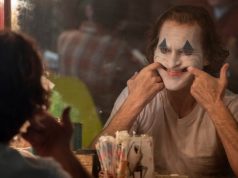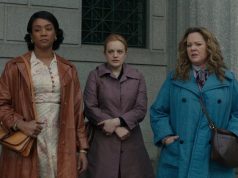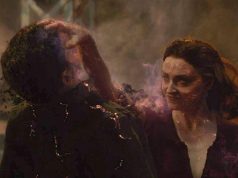I wrote of the first “Spider-Man” film that it was “probably the best superhero movie ever made.” Now comes the sequel, about which I can make the same assertion, but without the “probably”: This is the best superhero movie ever made. Period.
“Spider-Man 2” is funny, thrilling, even heartbreaking. It has the whirring plot and high melodrama of a comic book, the witty dialogue of a Coen Brothers movie, and the intricate combination of characterization and action of … well, of the first “Spider-Man,” which more or less set the bar.
The screenplay, which passed through a number of hands but is finally attributed to screenwriting veteran Alvin Sargent, lays out all the plot threads early. Peter Parker (Tobey Maguire), now a college student, neglects his friends, his classes and his pizza-delivery job because of his Spider-Man duties. Mary Jane (Kirsten Dunst) continues to pine for him, and he continues to abstain from her for her own good. Their best friend Harry Osborn (James Franco) still hates Spider-Man for killing his father, and in fact is becoming more and more like the late insane tycoon every day. Aunt May (Rosemary Harris) can’t pay her mortgage. And Peter’s spider powers are on the blink for reasons he can’t ascertain.
Meanwhile, our villain in the making is Dr. Otto Octavius (Alfred Molina), a brilliant scientist who has constructed four artificially intelligent mechanical arms to aid him in developing cold fusion. (It doesn’t completely make sense to me, but hey, I’m not a brilliant scientist.) In a demonstration gone awry, the arms fuse themselves to Octavius’ spine and, being artificially intelligent, wreak havoc on anyone trying to separate them from him. (Here director Sam Raimi shows us his horror roots with a chilling hospital scene, done without any musical scoring, that involves a chainsaw and a good deal of mayhem — but not much blood, since Raimi’s working in the PG-13 genre now. He can still work up a good scare, though.)
“Spider-Man” (2002) A-
“Spider-Man 2” (2004) A
“Spider-Man 3” (2007) B-
“The Amazing Spider-Man” (2012) C+
“The Amazing Spider-Man 2” (2014) C
“Spider-Man: Homecoming” (2017) B+
Back to Peter. His growing frustration over not having a normal life and his intense love for M.J. cause him to do the unthinkable: He gives up being Spider-Man. This thwarts the now-insane Octavius’ plan, which was to capture Spider-Man for Harry Osborn in exchange for Harry giving him the materials he needs to complete his mad fusion experiment.
Ah, the drama. The characters continue to win our sympathy and devotion, and the supporting cast buzzes with energy and invention. J.K. Simmons’ blustery newspaper boss J. Jonah Jameson is as hilarious as ever, and Elya Baskin has a nice turn as the slumlord at Peter’s apartment building. Raimi favorite Bruce Campbell makes an appearance as a smarmy theater usher, and Hal Sparks joins Spider-Man for an elevator scene that will long be remembered as the movie’s funniest moment.
Yes, it’s all much funnier than you’d expect, but not in a clownish, stupid way. Raimi remembers that for as much angst is inherent in a regular-guy-gets-superpowers story, his job is to make the thing entertaining. He offsets the weightiness with humor, and the setbacks with triumphs.
The effect is astonishing. The action scenes in this movie are the very zenith of modern filmmaking, a perfect combination of acting, cinematography, special effects, music and sound. The camera swoops and dives through New York as if it were Spider-Man himself, follows characters as they plummet from buildings, and gives us a dizzying perspective of all the thrilling goings-on. A sequence set aboard an elevated train bursts with adrenaline, then segues to a moving, very human resolution between Spider-Man and the train’s passengers, and that transition epitomizes the film as a whole. It isn’t all action, or all laughs, or all drama. It’s an ingenious combination of the three. It’s some of the most fun, and some of the best fun, that I’ve had in a theater in a while.
A (2 hrs., 7 min.; )





